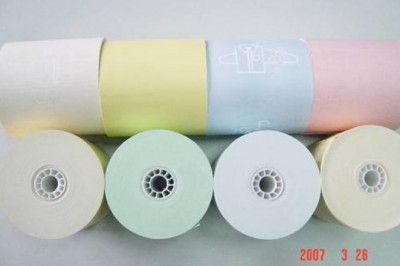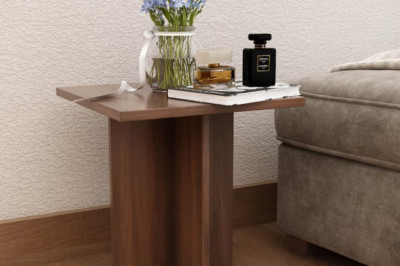views

If you are using an overhead crane for some material handling, it's essential to implement a preventative maintenance program based on your crane manufacturer's recommendations. This maintenance program should be centered on a thorough and effective safety inspection plan conducted regularly. If some crane inspector detects deteriorated components or any unsafe conditions during an inspection, the cranes must be repaired immediately before any worker can resume use of the system.
To implement a thorough preventative maintenance program, one must first consider the daily inspection and safety procedure checklist. Following a checklist in order to ensure your overhead crane is receiving proper maintenance will not only let you keep your system in working order for much longer but will also preserve your warranty and prevent worker safety concerns from arising.
Are you looking for the best Installation and Maintenance of Industrial Crane services in UAE? Contact Technomax for the best services.
Overhead crane maintenance UAE: The process
While only the designated personnel may perform required maintenance and repairs on the overhead crane systems, the crane operator should conduct inspections daily before and after the use. A daily inspection checklist should be used in order to ensure a practical and thorough assessment. OSHA 1910.179 refers to this daily inspection as a safety check. According to OSHA, the safety check must include all hoists and cranes before using at the beginning of each shift. Also, visual assessments must be limited to areas inspected from the floor, a catwalk, or other safe observation points.
Overhead crane maintenance UAE: Daily inspection checklist
According to OSHA 1910.179, the crane operator's daily safety inspection must be conducted each day and prior use at the beginning of each shift. To start with, the operator should ensure that all required safety equipment is present and is in use. He should also be trained and authorized to use the concerned equipment.
Once the operator has ensured that all safety equipment is present and in use, he should then check to see if the crane has been locked-out or tagged-out. The OSHA 29 CFR 1910.147 mandates that the control of hazardous energy or lockout/Tagout must be used to de-energize the crane. Before the operator begins the safety inspection, they should assess the area around the crane for any safety hazards.
Overhead crane maintenance UAE: How to check risk-prone areas:
-
Know where the crane disconnects and the switch is located.
-
Verify there are no warning signs around the push button pendant.
-
Make sure there aren't any workers doing their duties nearby.
-
Ensure that the load is able to travel freely or without any impediments.
-
Ensure there is no obstruction in or around the area where the load will be moved and that the site is large enough to move and place all materials safely.
-
Check if all below-the-hook devices are designed for the crane in use, and it can safely lift loads.
-
Ensure that load capacity is less than or equal to the rated capacity of the crane.
Once the crane operator has checked the area around the crane, he or she can begin a preliminary equipment checkout. Initial checkouts should occur before the operator starts any crane controls.
Complete equipment check:
-
Ensure there is no loose, broken, or damaged part on the hoist, trolley, bridge, runway, or any electric systems.
-
Check if the wire rope is reeved and seated within the drum grooves correctly.
-
Ensure that the bottom block is not twisted and no two lengths of wire rope are touching.
-
Check if nothing is contacted or close to open power sources and that all the enclosures are safely covered.
-
Ensure that there is no wire pulled from strain reliefs and bushings.
-
Verify if the pushbutton pendant controls are damaged or not-(check for cracks, torn parts, or any missing labels).
After checking out the entire crane area and conducting a preliminary equipment checkout, the crane operator can further inspect the overhead crane itself for any malfunctions or safety hazards.
Daily equipment safety check for power systems:
-
With the pushbutton turned off—check if the buttons are sticking and are operating smoothly.
-
With the pushbutton turned on, check if the crane warning device operates properly.
-
Ensure that the hoist hook rises when the button is pushed to the up position.
-
Check if the upper limit switch is functioning correctly.
-
Ensure if all other push button controls are operating correctly and moving in the right direction.
Daily equipment safety checkout for hooks:
-
Check that there is no more than 10 per cent wear on any part of the hook.
-
Check for any bending or twisting, and cracks.
-
Check if safety latches are in place and functioning correctly.
-
Ensure that the hook nut is tight and locked to the hook.
-
Make sure that the hook rotates freely and smoothly without any disturbance.
Daily equipment safety checkout for bottom block assembly:
-
Check if any Structural damage is present.
-
Check for Cracks on any component.
-
Check if Capacity markings are present.
-
Check if the Sheaves rotate freely without grinding.
-
Check if the guards are intact and are unbroken.
Daily equipment safety checkout for ripe and the load chain:
-
Check the wire rope and load chain by walking 360 degrees around the hook block and examine the wire rope and the chain.
-
Ensure that there is no reduction in diameter.
-
Ensure that there are no broken wires.
-
Make sure there is no kinking, cutting, crushing, un-stranding, or any thermal damage to the wire rope.
-
Check for any cracks, gouges, nicks, corrosion, or distortion on any link of the load chain.
-
Ensure that there is no wear at any contact points.
-
Verify that the chain sprockets are operating smoothly.
Daily equipment safety checkout for miscellaneous items:
-
Ensure that the bridge and trolley motor brakes operate correctly.
-
Check if there is hook drift when releasing controls in the up or down position.
-
Check if the trolley and bridge are on track and are functioning smoothly.
-
Ensure that there is no loose item present on the crane that might fall
-
Check if any oil leaks are present.
-
Ensure that a working fire extinguisher is available if needed.
-
Check if the air or hydraulic lines are in working condition.
-
And ensure all the below-the-hook devices are in good condition.
Adequate daily safety inspections are essential to the maintenance of any overhead crane system. It is necessary to create a safety regimen following the inspection checklist listed above and stop using the crane immediately in case of malfunction, unusual noises or movements are detected.












